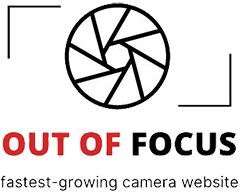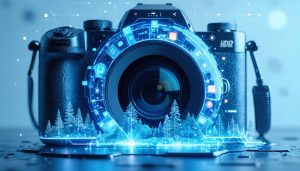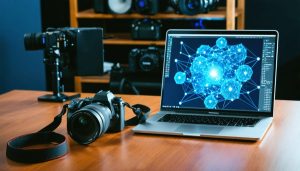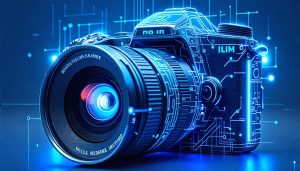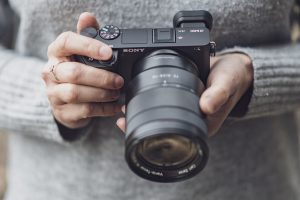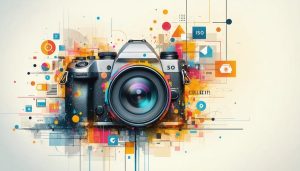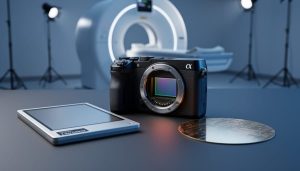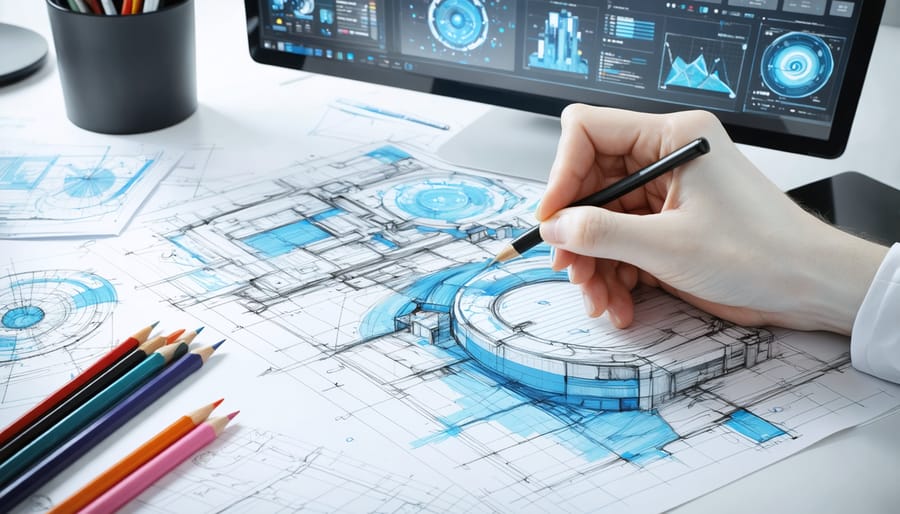
The creative battleground between artificial intelligence and human designers has reached a pivotal moment. With AI-powered tools like Midjourney and DALL-E generating stunning visuals in seconds, and platforms like Canva integrating AI-assisted design features, the graphic design landscape is transforming at breakneck speed. Yet beneath the headlines about AI replacing designers lies a more nuanced reality: AI isn’t so much taking over graphic design as it is revolutionizing how designers work.
Today’s graphic designers find themselves at a fascinating crossroads where artificial intelligence amplifies human creativity rather than replaces it. While AI excels at generating variations, automating routine tasks, and processing vast amounts of visual data, it still lacks the human elements that make design truly impactful – emotional intelligence, cultural understanding, and the ability to tell compelling visual stories that resonate with audiences.
This evolution mirrors other technological shifts in design history, from the introduction of desktop publishing to the rise of digital design tools. Rather than spelling the end of human designers, each innovation has elevated the profession by automating tedious tasks and allowing creators to focus on what matters most: strategic thinking, creative problem-solving, and meaningful client relationships.
The Current State of AI in Graphic Design
Popular AI-Powered Design Tools
The landscape of AI-powered design tools has expanded dramatically, offering both professionals and beginners powerful options for creative work. Leading the pack is Midjourney, which excels at generating artistic illustrations and conceptual designs from text descriptions. Adobe’s Firefly suite, integrated into Creative Cloud applications, brings AI capabilities directly into familiar workflows, allowing designers to generate and modify images while maintaining their established processes.
Another notable player is DALL-E, which has gained popularity for its ability to create unique visuals from detailed text prompts. For those focused on brand identity, tools like Logoai and Brandmark use artificial intelligence to generate logo concepts and complete brand packages, though these still often require human refinement to achieve professional results.
Modern AI image editors like Canva’s Magic Studio and Photoleap have revolutionized the editing process, offering features like background removal, image expansion, and style transfer with just a few clicks. These tools are particularly valuable for quick iterations and exploring different creative directions.
While these AI tools are impressive, they’re best viewed as collaborators rather than replacements. They excel at automating repetitive tasks and generating initial concepts, but the final polish and creative direction still require human expertise and artistic judgment.
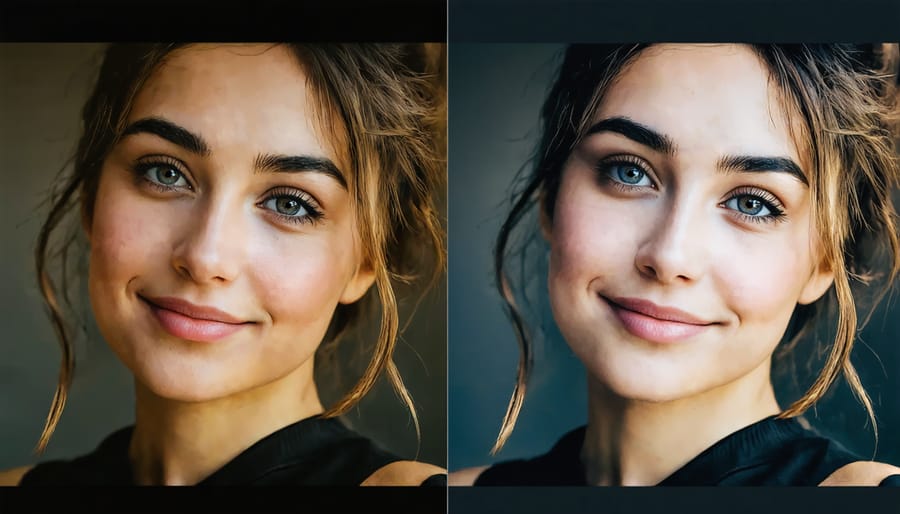
Real-World Applications
Designers and photographers are actively incorporating AI tools into their daily workflows, often with remarkable results. For instance, art directors at major advertising agencies now use Midjourney to rapidly generate concept art for client presentations, allowing them to explore multiple creative directions in hours rather than days.
Logo designers are leveraging tools like Logoai and Looka to create initial design variations, which they then refine and customize for their clients. Web designers are using AI-powered platforms like Wix ADI and Webflow to streamline their layout process while maintaining creative control over the final product.
In photo editing, professionals are using AI-enhanced tools like Luminar Neo to automate time-consuming tasks such as sky replacement and portrait retouching. Marketing teams are experimenting with Dall-E 2 to create custom social media visuals, while maintaining brand consistency through human oversight and refinement.
These real-world applications demonstrate how AI serves as a powerful complement to human creativity rather than a replacement. Designers are finding that AI tools help accelerate their workflow, allowing more time for strategic thinking and creative fine-tuning.
What AI Can (and Can’t) Do in Design
AI’s Strengths in Image Editing
In recent years, AI-powered editing tools have demonstrated remarkable capabilities in handling specific graphic design tasks with unprecedented efficiency and precision. One area where AI truly shines is automated image retouching, where algorithms can instantly adjust exposure, color balance, and contrast while maintaining natural-looking results.
Background removal, once a time-consuming task requiring careful manual selection, can now be accomplished in seconds with AI tools that accurately detect and separate subjects from their backgrounds. These tools have become particularly valuable for e-commerce photographers and graphic designers working with product images at scale.
AI excels at repetitive tasks that follow clear patterns, such as batch processing large numbers of images to maintain consistent styling across marketing campaigns. The technology has also proven remarkably adept at upscaling low-resolution images while preserving detail, and removing unwanted elements like blemishes or power lines with minimal user input.
Another strength lies in AI’s ability to analyze and enhance facial features in portraits, automatically adjusting skin tones, smoothing imperfections, and even suggesting optimal crops based on composition rules. For social media content creators and marketing professionals, AI tools can quickly resize and optimize images for different platforms while maintaining visual quality.
These capabilities don’t replace human creativity but rather serve as powerful automation tools that free up designers to focus on more strategic and creative aspects of their work. The technology’s strength lies in handling the technical, time-consuming aspects of image editing that often slow down the creative process.
Current Limitations
While AI has made remarkable strides in graphic design, it still faces several significant limitations that highlight the irreplaceable value of human designers. Creative problem-solving remains a distinctly human strength, particularly when projects require understanding subtle cultural nuances, emotional resonance, or brand storytelling that goes beyond visual aesthetics.
AI tools struggle with original conceptual thinking and often produce derivative work based on existing designs. They can’t truly understand client needs, negotiate project requirements, or adapt to changing circumstances during the creative process. Human designers excel at reading between the lines, interpreting abstract ideas, and translating complex emotional concepts into visual solutions.
Context awareness is another area where AI falls short. While it can generate visually appealing designs, it lacks the ability to understand broader social, cultural, and historical contexts that might influence design choices. This limitation can lead to inappropriate or ineffective design solutions that human designers would naturally avoid.
Typography and layout decisions often require nuanced understanding that AI hasn’t mastered yet. Human designers bring years of experience and intuition to decisions about spacing, hierarchy, and visual flow that AI tools currently struggle to replicate with the same sophistication.
Additionally, human designers excel at collaboration and iteration. They can work directly with clients, understand subtle feedback, and make intuitive adjustments that align with brand values and business objectives. This human touch in the design process, combined with emotional intelligence and creative instinct, continues to set professional designers apart from AI alternatives.
The Human Element in AI-Assisted Design
Maintaining Creative Control
While AI tools are becoming increasingly sophisticated in graphic design, maintaining creative control is essential for preserving your unique artistic vision. Think of AI as a collaborator rather than a replacement – it’s there to enhance your workflow, not dictate it.
Start by establishing clear creative direction before involving AI tools. Sketch out your concepts, create mood boards, and define your project objectives. This groundwork ensures that AI serves your vision rather than the other way around. When using AI design tools, treat their outputs as suggestions rather than final products. Take what works and modify or discard what doesn’t align with your intended direction.
Customize AI-generated elements to match your style. Whether it’s adjusting colors, tweaking compositions, or refining typography, these personal touches maintain your artistic signature. Remember that AI tools are most effective when combined with human creativity and expertise.
Consider implementing a hybrid workflow where AI handles time-consuming tasks like initial layouts or background removals, leaving you free to focus on creative decision-making and fine-tuning. This approach maximizes efficiency while ensuring your designs remain authentic and purposeful.
Don’t be afraid to experiment with different AI tools and settings, but always filter their output through your professional judgment. Your experience, aesthetic sensibilities, and understanding of client needs are irreplaceable assets that AI can complement but never substitute.
Workflow Integration
Integrating AI tools into your existing design workflow doesn’t have to be disruptive. Just as AI is revolutionizing photography workflow, it can enhance your design process when implemented thoughtfully.
Start by identifying repetitive tasks in your workflow that AI can streamline. This might include initial mockups, background removal, or basic image editing. Use AI as a first-draft tool, generating multiple concepts quickly that you can then refine with your expertise.
Consider adopting a hybrid approach:
– Use AI for rapid prototyping and ideation
– Leverage AI tools for time-consuming technical tasks
– Reserve human creativity for strategic decisions and final touches
– Maintain regular client communication to ensure expectations align
Begin with one AI tool at a time, mastering its capabilities before adding more to your toolkit. Many designers find success starting with AI-powered layout suggestions or color palette generators before moving to more complex applications.
Remember to establish clear boundaries between AI-assisted work and purely human-created elements. This helps maintain transparency with clients while ensuring the final product benefits from both technological efficiency and human creativity. Keep your traditional design skills sharp while embracing AI as a powerful complement to your expertise.
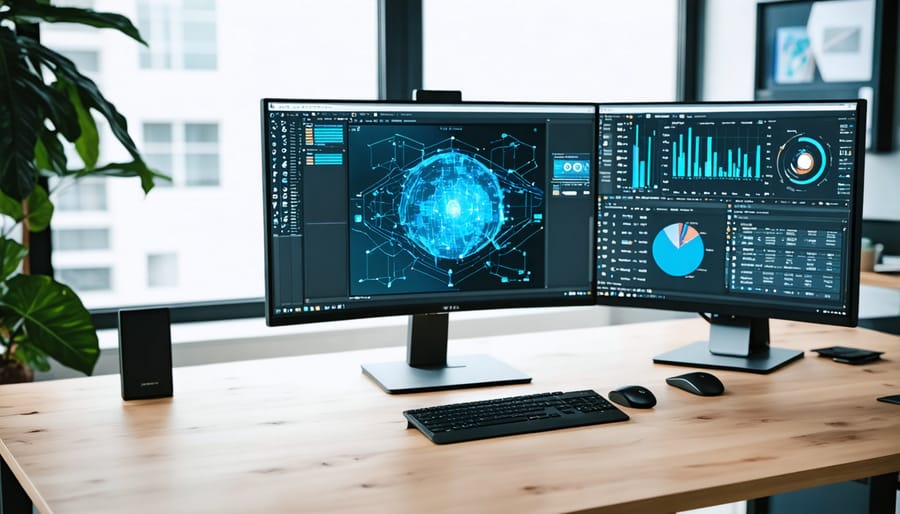
The Future of AI in Graphic Design
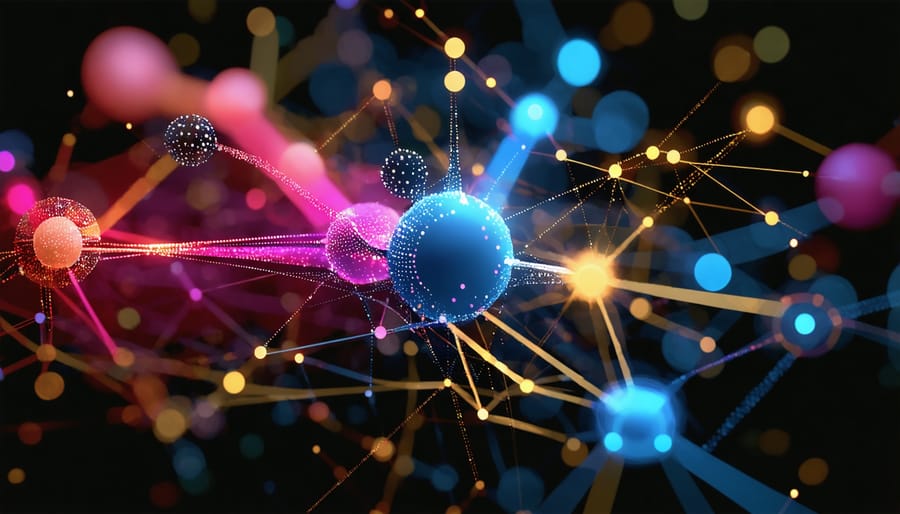
Upcoming Technologies
The landscape of AI-powered graphic design tools is evolving rapidly, with several groundbreaking technologies on the horizon. Adobe’s Firefly is expanding its capabilities to include more sophisticated layout generation and advanced typography manipulation, while Midjourney continues to push boundaries with its upcoming V6 release, promising near-photorealistic design capabilities.
One particularly exciting development is the emergence of AI tools that can understand and maintain brand consistency across multiple design elements. These systems will learn from existing brand guidelines and automatically apply them to new designs, streamlining the creation of cohesive marketing materials.
Collaborative AI assistants are also becoming more sophisticated, with new tools that can work alongside designers in real-time, offering suggestions and alternatives while learning from the designer’s preferences and style choices. These assistants will be able to handle complex tasks like animation and motion graphics, areas that have traditionally required extensive manual work.
We’re also seeing the development of AI systems that can translate verbal descriptions into complete design concepts, making design more accessible to non-designers while providing professional designers with quick starting points for their projects. However, these tools are being developed with a focus on augmenting human creativity rather than replacing it entirely.
Preparing for Change
To stay competitive in today’s evolving design landscape, focus on developing a hybrid skill set that combines traditional design expertise with AI proficiency. Start by learning popular AI design tools like Midjourney, DALL-E, and Adobe Firefly, but don’t neglect your foundational design skills. Understanding design principles, color theory, and typography remains crucial, as these human elements help you transform your creative workflow effectively.
Consider specializing in areas where human creativity shines, such as brand strategy, emotional storytelling, and complex conceptual work. These aspects often require nuanced understanding and emotional intelligence that AI currently struggles to replicate. Stay updated with industry trends and continuously experiment with new tools while building a portfolio that showcases both AI-enhanced and traditional design work.
Network with other designers and join communities where you can share experiences and learn from peers. Consider offering services that combine AI efficiency with human creativity, positioning yourself as a forward-thinking designer who can deliver both speed and artistic vision. Remember, the goal isn’t to compete with AI but to harness it as a powerful tool in your creative arsenal.
While AI is undeniably transforming the graphic design landscape, it’s clear that it’s not “taking over” but rather evolving into a powerful collaborative tool. The key takeaway is that AI excels at automating repetitive tasks, generating initial concepts, and streamlining workflows, but it cannot replace the human elements of emotional intelligence, cultural understanding, and creative intuition that make design truly impactful.
For designers looking to thrive in this AI-enhanced future, the path forward involves embracing these tools while developing uniquely human skills. Focus on strengthening your strategic thinking, building deeper client relationships, and honing your ability to tell compelling visual stories. Consider learning how to effectively incorporate AI tools into your workflow while maintaining your creative vision and signature style.
Remember that successful designers of tomorrow will be those who can bridge the gap between technological capability and human creativity. Start by experimenting with AI design tools for basic tasks, but continue investing in your creative development and understanding of design principles. The future of graphic design isn’t about AI versus humans – it’s about finding the sweet spot where both work together to create more innovative, efficient, and impactful design solutions.
Stay curious, keep learning, and view AI as an opportunity to elevate your work rather than a threat to your profession. The most successful designers will be those who master both traditional design skills and new AI-powered capabilities.
